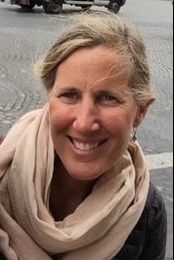ASSAY: A JOURNAL OF NONFICTION STUDIES
4.2
4.2
|
Each time a protagonist leaps a plane to an ashram in India or jumps into an affair, I lose a little faith in our ability to transform within the lives we live. Such a radical departure seems to not only forsake what is good within our lives but seems perhaps to be a shortcut to change. And not very realistic: Who has time, or money, for the plane ride, for a six-month retreat? Who even has the luxury to lay on the floor immobile in the midst of family and jobs? How then do I shift the story of my life? How do I transform within the life I am living? Slowly: transformation is organic, debated, trial and error—built on small movements, on the sentences of our lives—to a lasting change. The motivation to move to what makes us feel alive prompts different choices: we invert the simple structures of our lives to pursue change. Small actions akin to sentences reveal subtle differences in our perceptions and understanding, expanding our range to feel. A radical point of departure lacks a stable base for change, the ending thus unearned, and so the change desired not lasting. The sentence is the agent of change, not some outside force, but words sifted and honed to precise meaning, crafting incremental shifts to an enduring change.
A work of nonfiction can pivot on a single idea, formed in a single sentence that ushers in the narrator’s moment of choice. A sentence binds us to this moment of revelation, striking a chord that sings because it builds on the entire discovery, a melody laid bare in the work. Words empower the journey and animate the struggle. Powerful sentences placed throughout the work mimic the process of transformation: we gather a change bit by bit, assimilating moments to understanding. Or sometimes we have an understanding at the start of the work and we seek to know if it is true: we quest. A sentence holds within a power greater than itself, embodying hints of the larger journey, building a resonance that rises to the moment of discovery. By examining the nonfiction of several authors, I will look at the role of the single sentence within the context of the larger work. Change may strike in a moment, like an epiphany, but transformation evolves from the pieces of understanding, the sentences, that meld to the larger realization.
|
Click here to download a printable PDF with Works Cited.
|
Annie Penfield has had work published in Fourth Genre, Hunger Mountain, R.K.V.R.Y, Equestrian Quarterly, and Prairie Schooner sports blog. Her essay “The Half-Life,” won Fourth Genre’s Michael Steinberg 2012 nonfiction essay prize, and was named a Notable Essay by Best American Essays. She is a graduate from the MFA in Writing Program from the Vermont College of Fine Arts. She lives with her family, several horses and a mule on a farm in Strafford, Vermont, and is at work on a memoir based on “The Half-Life."
|

